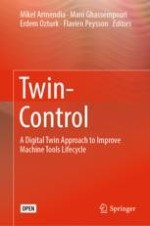6.1 Introduction
6.2 Theoretical Background
-
Speed:
-
Load:
6.3 End-of-Life Calculation Module
6.4 Validation Tests
6.4.1 Experimental Set-up
6.4.2 Results
# | Test stop time (h) | Failure | Comments |
|---|---|---|---|
1 | 22 | Greasing | – |
2 | 34 | Pitting | Regreasing after 20 h |
3 | 20 | – | Good condition |
4 | 23 | Greasing | – |
5 | 18 | Severe pitting | – |
6 | 35 | Micro-pitting | Regreasing every 5 h |
